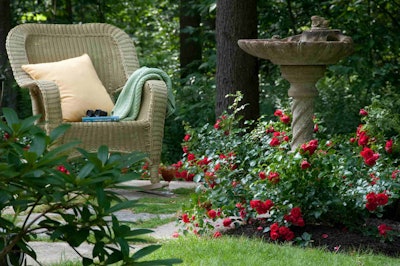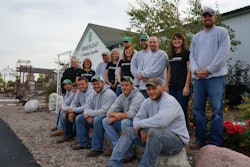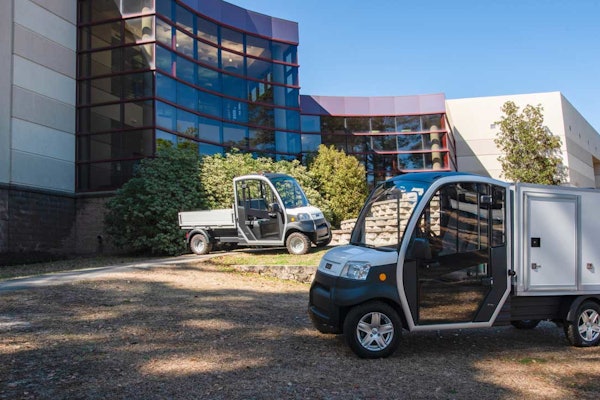 Placing fragrant flowers, like Flower Carpet Scarlet, near a sitting area can help add extra depth to a space.
Placing fragrant flowers, like Flower Carpet Scarlet, near a sitting area can help add extra depth to a space.Photo: Anthony Tesselaar Plants
When it comes to designing a landscape, you don't want to get stuck in a rut. It's important to keep your designs interesting and appealing.
It’s easy to fall into the trap of “if it’s not broke, don’t fix it.” But this can create monotony in your work and the last thing you want is for each client’s project to start looking the same as the last customer’s yard.
Although the landscape is primarily enjoyed with the sense of sight, you can design with the other four senses in mind to add an extra layer of depth.
Scent
Followed by sight, this is one of the easier senses to stimulate. There are numerous fragrant flower varieties available, with even some that are said to smell like chocolate. Popular fragrant plants such as gardenias, sweet peas, freesias, jasmine and roses are used to create perfumes, so these are always good choices.
Certain varieties of tulips, daffodils and hyacinths are known for their aroma and are also early spring bloomers. These plants can be scattered around the garden or they can be placed more strategically to give the illusion of a fragrant-full yard. By placing some sweet-smelling blooms near the garden seating and other places a person pauses, visitors to the space will actually be more likely to follow the adage and “stop and smell the roses.”
Touch
Lots of plants have developed adaptations to keep people from touching them, whether it be thorns or chemicals that cause itchy rashes. However, there are others that seem to beg to be touched. Lamb’s ear, silver sage (or hobbit’s foot), and licorice plant all feature fuzzy leaves that have a gray-green color to them.
Ornamental grasses have their fair share of cloudlike cultivars, including fountain grasses and Mexican feather grass. When planted en masse, the desire to reach out and touch them grows. Their fluffy features can soften any hard lines found in a landscape as well.
Taste
The edible garden trend has picked up full steam, and even if your client doesn’t want to dedicate a portion of the garden solely to edibles, there are still multiple ways to incorporate a little bit of tasty landscaping into the mix. Marigolds are effective at deterring beetles so you can plant these alongside a veggie your clients love.
Other ways to incorporate edibles tastefully is to use a fruit vine, as with grapes, to grace an arbor, causing it to provide both shade and sustenance over time. Containers are also another unobtrusive option to accommodate some flavorful herbs and such.
Hearing
Sound is harder to achieve with plants alone, as they often need wind playing through them to create a tranquil rustle. If your client enjoys the lazy drone of the worker bees, increase the odds of attracting them by planting pollinator friendly greenery.
The same can be done for bird enthusiasts looking for some birdsongs. Choosing shrubs and trees that provide the necessary food and shelter will increase the odds of feathered friends visiting.
To create other soothing sounds in the backyard, water features are an obvious go-to. The variety of designs and styles all produce different noises. The sound of water is said to be soothing and many clients love that.
Try to pull these sensory details into your designs by choosing what best reflects your customer and the space.









